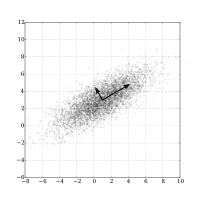
Photo from wikipedia
Abstract Iran is among the top ten CO2 emitters in the world and has pledged to reduce such emissions by up to 12 percent by 2030 through various policies and… Click to show full abstract
Abstract Iran is among the top ten CO2 emitters in the world and has pledged to reduce such emissions by up to 12 percent by 2030 through various policies and strategies. However, achieving this is somewhat undermined by the country’s heavy reliance on fossil fuels which contributes to environmental pollution and depletion of natural resources. It is therefore important to have an understanding of the economic, social, and environmental subsystems and their interactions in order to formulate a suitable development path or model. Due to the lack of comprehensive studies on the current situation and the dynamics among these variables, this paper provides a multi-stage analysis of the issues based on data from 1992 to 2015 to construct the principal component analysis (PCA) combined index for each subsystem. Then, the interactions among the subsystems are investigated over the short- and long-terms using the vector autoregressive (VAR) model. The results of the PCA show that Iran lacks a balanced sustainable development approach as improvements in environmental indicators do not match those of the society and the economy indices. Further, the associated time path for the economic and societal indices depicts an increasing trend over time, especially in the economy index and that, since 2010, this subsystem has overtaken the societal index. Estimations of the VAR model, impulse response functions, and variance decomposition analysis show that the country’s economic development has seriously undermined the environment even as improving the social indices has strengthened the environmental indicators. The interactions among subsystems show that economic development of the country took little consideration of environmental issues. This is the main reason for the backwardness of the environmental indices and its divergence from economic and societal indices. It is clear that assuming equal rates of growth for all subsystems have not produced a balanced development path. For Iran to achieve her sustainable development goals there should be increased focus on the environmental subsystem with the overall system converging symmetrically when the high growth rate assumption (double) is applied for this index compared with the societal and economical indices.
Journal Title: Ecological Indicators
Year Published: 2019
Link to full text (if available)
Share on Social Media: Sign Up to like & get
recommendations!